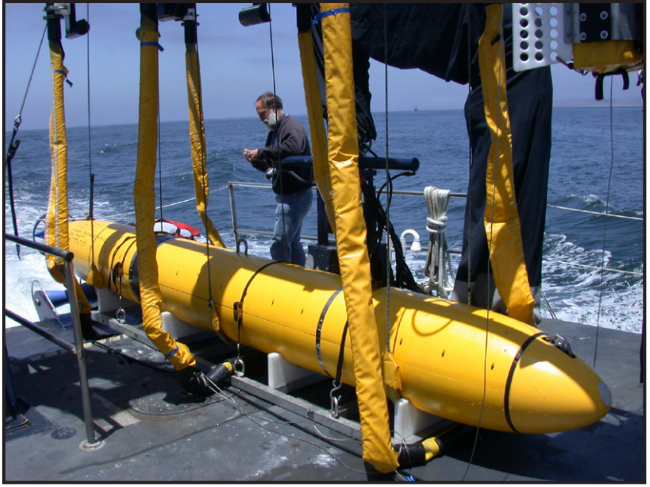CFD Modeling for an Autonomous Underwater Vehicle
By Andrew Banka, P.E., Kevin Linfield, Ph.D., P.Eng., P.E., and Kelly Hile
Deep Water Research Using Autonomous Underwater Vehicles (AUVs)
The Monterey Bay Aquarium Research Institute (MBARI) performs advanced ocean research in the areas of benthic processes, ocean observations and measurements, ocean biogeochemistry, submarine volcanism, marine ecology, sea floor imaging, and pH shifts in the upper ocean. MBARI utilizes autonomous underwater vehicles (AUVs) to support its research programs. On-board computer controls allow vehicles to navigate the ocean for long periods of time, periodically surfacing to transmit acquired data via wireless telemetry. The AUVs provide MBARI with an efficient and cost-effective alternative for performing deep water research. However, because these vehicles carry their own on-board power sources such as batteries and fuel cells, their travel range is limited. Previously, they could not perform long-duration missions, such as wide ocean surveys or under-ice polar explorations. About 15 years ago, the MBARI development team began research into a long-range AUV. The goal was to minimize hydrodynamic drag - allowing the vehicle to use the energy saved to travel further.

Autonomous Underwater Vehicle (AUV) ready for deployment
Case Study: How Computer Simulations Can Help to Minimize Hydrodynamic Drag
Initially, the project focused on the use of modeling and simulation tools to determine whether a long-range, high speed vehicle was feasible based on current energy storage technology. They requested Airflow Sciences perform CFD simulations to define body shapes exhibiting minimum drag over the range of expected vehicle speeds. This included an analysis of the boundary layer behavior along the length of the vehicle as well as the interaction of the flow with the aft-mounted propeller. By modifying the shape of the vehicle’s nose and after-body regions, uniform flow conditions were achieved that minimized skin friction and form drag, and presented the propeller with inlet conditions that improved its efficiency.
Engineers commonly employ CFD modeling techniques when assessing the shape and overall design of vehicles that move through water (hydrodynamics) or air (aerodynamics). Computer simulations give critical information prior to the prototyping stages, narrowing down a design before building a prototype and testing it. In some cases, a well-designed CFD model can take the place of testing altogether. In the case of the AUV, CFD results can also be used to estimate the work that needs to be done by the propeller and enable engineers to size the vehicle motor with longer missions and optimal battery life in mind.
Learn more :
Azore CFD / Coreform Webinar - This webinar looks at the complete CFD workflow using an AUV as an example case.
Reducing Drag of an AUV - Airflow Sciences collaborated with AirShaper on this informative article.
